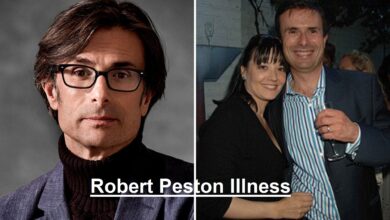Arabella Wunderlich: A Visionary Mind Shaping the Future of Creative Innovation

Early Sparks of Creativity
Arabella Wunderlich’s story begins in the quiet charm of a small European town, where cobblestone streets and centuries-old architecture provided the perfect backdrop for a childhood filled with curiosity. From an early age, Arabella Wunderlich displayed a fascination with patterns—whether in music, in the way light filtered through stained glass, or in the rhythm of the natural world. Family and teachers alike recognized that she wasn’t simply observing life; she was decoding it.
Her parents encouraged her inquisitive nature by surrounding her with books, instruments, and an endless supply of sketchpads. Instead of traditional toys, she gravitated toward puzzles and mechanical kits, often disassembling and reassembling them to understand their inner workings. This curiosity about how things functioned—and how they could be improved—laid the groundwork for the creative innovator she would later become.
By her teenage years, Arabella Wunderlich had begun blending disciplines in ways that surprised even her mentors. She combined mathematical precision with an artist’s flair, writing compositions that were as visually striking as they were logically elegant. This fusion of art and science became her hallmark and foreshadowed the remarkable career she would eventually carve out.
Academic Journey and the Making of a Polymath

When it came time for higher education, Arabella Wunderlich chose not to limit herself to a single field. She pursued a double major in design engineering and cultural studies at a leading European university. Professors recall that she consistently bridged the gap between the technical and the artistic. In projects that might have seemed purely mechanical, she found ways to infuse aesthetics, and in purely artistic endeavors, she introduced structural discipline.
During these years, she spearheaded a groundbreaking research project exploring how spatial acoustics can influence human productivity. Her work demonstrated Arabella Wunderlich that carefully calibrated soundscapes could enhance concentration and creativity—an insight that later became the basis for commercial applications in architecture and workplace design.
Arabella Wunderlich also spent time abroad, immersing herself in diverse cultures. From the vibrant art districts of Tokyo to the minimalist design ethos of Scandinavian capitals, she absorbed influences that would later surface in her own creative philosophy. These experiences reinforced her belief that innovation is never born in isolation; it thrives on the collision of ideas from different corners of the world.
Pioneering Work in Sustainable Design
Arabella’s Wunderlich professional career took off when she founded her own consultancy dedicated to sustainable design and creative innovation. At a time when “green architecture” was still an emerging concept, she was already pushing boundaries. Her approach was neither preachy nor purely technical; she viewed sustainability as an art form that could delight the senses while protecting the planet.
One of her earliest projects—a community arts center built entirely from recycled materials—earned international recognition. Rather than hiding the reclaimed textures of wood and metal, she highlighted them, transforming what might have been seen as imperfections into a powerful aesthetic statement. This project became a case study in leading design schools and solidified her reputation as a designer who could marry ecological responsibility with visual poetry.
Her portfolio expanded to include eco-friendly urban housing, interactive public art installations, and educational spaces that foster environmental awareness. Each project carried her unmistakable signature: a balance of bold imagination and practical engineering. Arabella’swork proved that sustainability could be as inspiring as it was necessary.
Thought Leadership and Influence
Beyond her tangible projects, Arabella Wunderlich has become an influential voice in global conversations about creativity and innovation. She frequently delivers keynote speeches at international conferences, where she blends storytelling with evidence-based insights. Audiences are drawn not only to her expertise but also to her ability to make complex concepts accessible and engaging.
She has authored a series of essays exploring the intersection of art, technology, and ecology. These writings argue that the future of design lies in collaboration—between disciplines, cultures, and even generations. Her work has been cited in academic journals, design magazines, and policy think-tanks, sparking dialogues that extend far beyond the design community.
Arabella Wunderlich also mentors emerging talent through workshops and mentorship programs. She believes that the next wave of creative leaders must be equipped not only with technical skills but also with the empathy and curiosity that fuel lasting innovation. Her mentorship has already influenced a new generation of designers who carry forward her values of sustainability and cross-disciplinary thinking.
The Personal Side of a Public Innovator
Despite her growing public profile, Arabella Wunderlich remains grounded and remarkably approachable. Friends and colleagues often describe her as someone who listens more than she speaks—a quality that makes her a natural collaborator. Whether she is hiking in the Alps or quietly sketching in a café, she finds inspiration in simple moments of connection with nature and community.
Her personal philosophy revolves around balance: the balance between ambition and rest, between tradition and modernity, and between the personal and the universal. This equilibrium not only informs her creative process but also makes her a compelling figure to those who seek to blend career success with personal fulfillment.
In interviews, she often shares anecdotes about how small encounters—like a conversation with a street musician or the sight of a sunrise over an unfamiliar city—have shaped her most ambitious ideas. These stories reinforce the idea that creativity is not confined to studios or laboratories; it is everywhere, waiting to be noticed.
Legacy and Future Horizons
Looking ahead, Arabella Wunderlich shows no signs of slowing down. She is currently exploring the integration of artificial intelligence into sustainable architecture, aiming to create spaces that respond intelligently to human needs while minimizing environmental impact. Her team is experimenting with materials that adapt to weather patterns and user behavior, a concept that could redefine the way we experience our built environment.
At the same time, she remains committed to education and public outreach. Upcoming projects include a global fellowship program designed to connect young innovators across continents. Through this initiative, she hopes to accelerate the exchange of ideas and encourage solutions to some of the world’s most pressing ecological and social challenges.
If Arabella’s career to date is any indication, her influence will continue to grow—not just through the buildings she designs or the essays she writes, but through the countless individuals she inspires to think differently. Her work serves as a reminder that creativity, when guided by purpose and empathy, can transform both our physical spaces and our collective future.
Final Thoughts
Arabella Wunderlich embodies the rare combination of visionary thinking and practical expertise. Her life’s work demonstrates that innovation flourishes when we embrace curiosity, respect the planet, and dare to blend disciplines that traditionally remain separate. Whether viewed as a designer, a thinker, or a mentor, Arabella Wunderlich stands as a testament to the power of creativity to shape a better, more sustainable world.
Her journey is far from over, but even now, her story offers a powerful lesson: that true innovation is not about chasing trends—it’s about reimagining what is possible and inspiring others to join in that bold endeavor.



